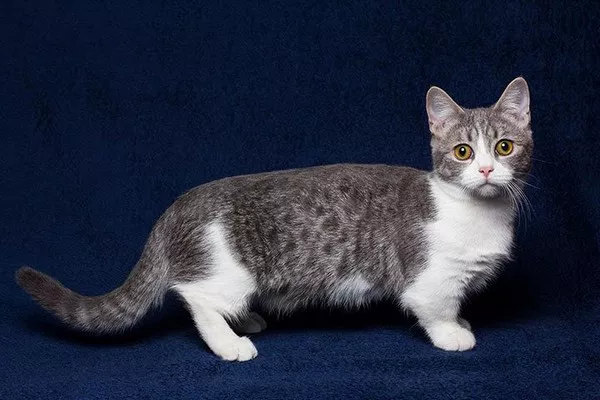Cymric cats, known for their robust physique and playful demeanor, are a long-haired breed originating from the Isle of Man. They share similarities with the Manx breed but are distinguished by their fur and physical characteristics. With a strong build and a dense, plush coat, Cymric cats are not just beautiful but also have unique traits that make them a popular choice among cat lovers.
Allergies to Cats
Many people experience allergies to cats due to proteins found in their skin, saliva, and urine. The primary allergenic protein is Fel d 1, which is produced in the sebaceous glands of the skin. When cats groom themselves, this protein is spread onto their fur, and as it dries, it becomes airborne, leading to allergic reactions in sensitive individuals.
Are Cymric Cats Hypoallergenic?
The term “hypoallergenic” refers to substances that are less likely to trigger allergic reactions. While no cat is completely hypoallergenic, some breeds are known to produce fewer allergens. Cymric cats, like other long-haired breeds, may be perceived as hypoallergenic because their fur can trap allergens, preventing them from becoming airborne as easily.
The Role of Fur and Grooming
Cymric cats have a unique double coat that is thick and water-repellent. This coat requires regular grooming to prevent matting and to reduce shedding. Frequent brushing helps remove loose fur and dander, which can decrease the overall allergen load in the environment. Additionally, regular grooming allows owners to manage their cat’s coat while keeping allergens at bay.
See Also: How Much Does A Sphynx Cat Cost?
Factors Influencing Allergen Production
Several factors contribute to the amount of allergens a cat produces, including age, diet, and overall health. Younger cats tend to produce more allergens than older ones. Feeding a balanced diet rich in fatty acids can help improve skin health, potentially reducing allergen production. Keeping a Cymric cat healthy through regular veterinary check-ups and vaccinations can also contribute to lower allergen levels.
Managing Allergies in the Home
For individuals with allergies, creating a cat-friendly yet allergy-reduced environment is essential. Here are some tips:
1. Designated Cat Areas: Keep certain areas of the home cat-free, particularly bedrooms, to provide a safe space for allergy sufferers.
2. Air Purifiers: Using HEPA air purifiers can significantly reduce airborne allergens. These filters trap dander and dust, creating a cleaner atmosphere.
3. Regular Cleaning: Frequent cleaning of surfaces, including vacuuming and dusting, helps minimize allergen accumulation. Use vacuum cleaners with HEPA filters for best results.
4. Bathing and Grooming: Regularly bathing your Cymric cat can help reduce dander and allergens. Consult with a veterinarian for the best bathing schedule and products.
5. Wash Bedding Frequently: Regularly wash your bedding and any fabrics that come into contact with your cat to remove allergens.
Personal Experiences with Cymric Cats
Many owners of Cymric cats report mixed experiences with allergies. Some find that their symptoms improve with this breed, while others continue to experience reactions. Individual sensitivity plays a significant role in how one responds to cat allergens. Meeting a Cymric cat before making the decision to adopt can help potential owners gauge their sensitivity.
Conclusion
While Cymric cats are not entirely hypoallergenic, they may produce fewer allergens compared to other breeds. By understanding the factors that influence allergen production and implementing strategies to manage allergies, cat lovers can enjoy the companionship of a Cymric cat while minimizing allergic reactions. If you’re considering bringing a Cymric into your home, it’s essential to be proactive about managing allergens for a harmonious living environment.
Related Topics
What Is The Best Cat Food For UTI Health?
What Is The Best Cat Food For Sensitive Stomach And Urinary Health?



























